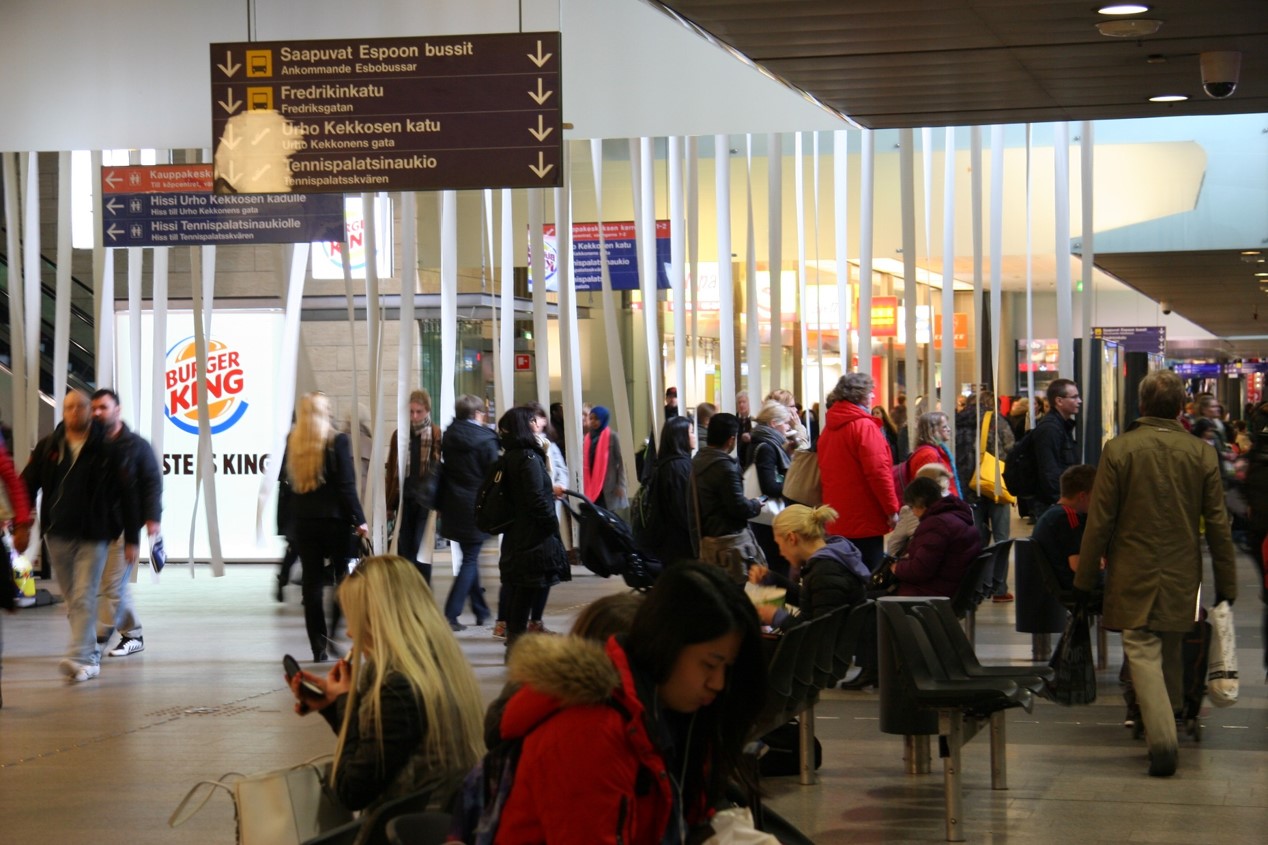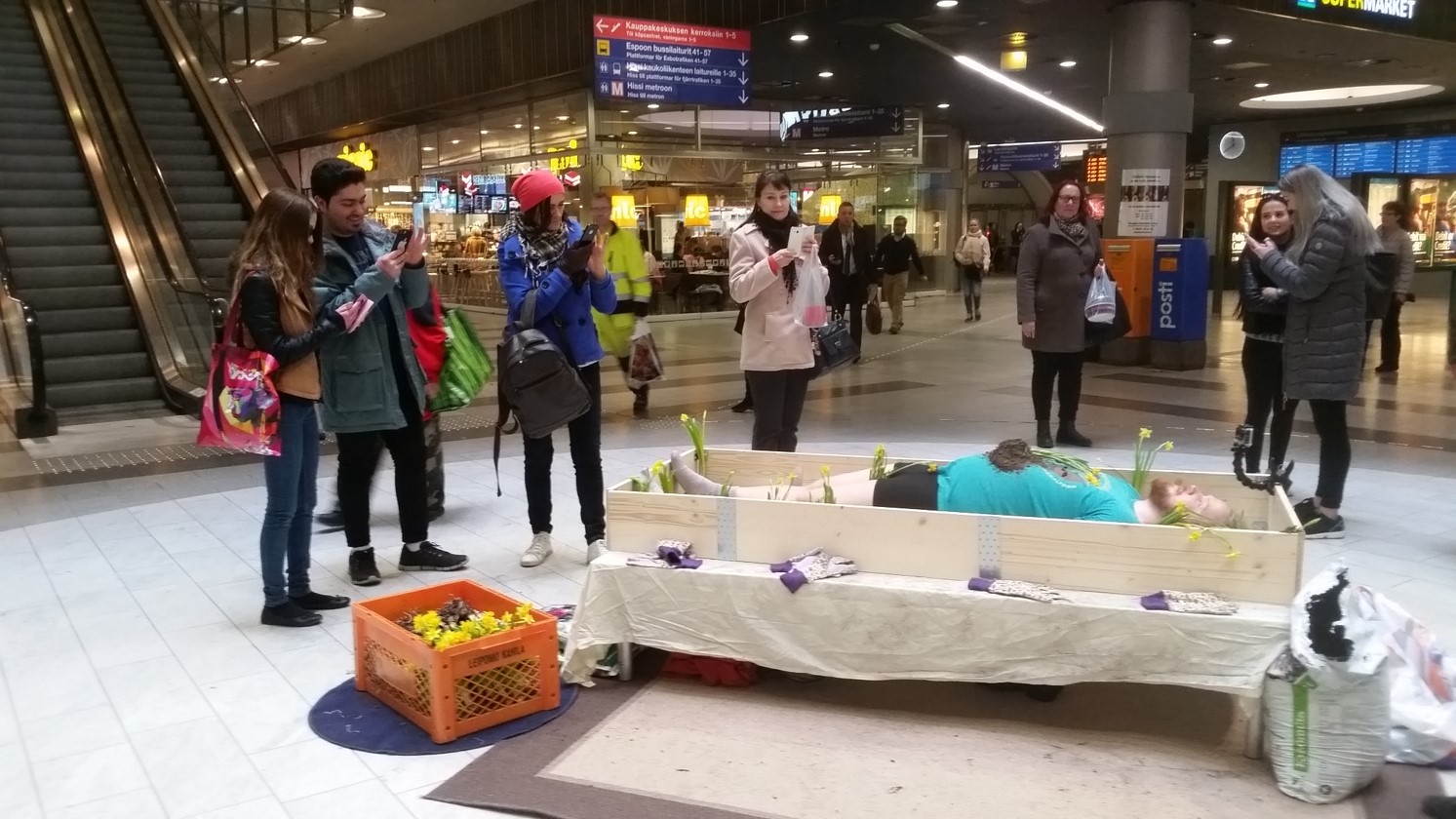ARTS-E0709 - Media Intervention in the City, 25.02.2019-01.04.2019
This course space end date is set to 01.04.2019 Search Courses: ARTS-E0709
Topic outline
-
PROGRAMME
HOMEWORK - Everyone to prepare a short 5-10 mins powerpoint presentation on an artist working with participatory/public/socially engaged art that you find interesting and relevant to project ideas you are working on for REDI. Each week 2 or more people will present.
READINGS - Make sure you check the Materials section in the left menu and read the texts. We will discuss "A Strong Couple" next week in class.
NOTE - Apart from first morning, ALL teaching and class contact happens at REDI on Mondays. You must be able to take part during these days. To complete the course you will also need to use other time, in addition to Monday class time, to develop your project. Room we are using is located next to the "Olohuone" (Livingroom) on 2nd floor, near to Arnolds Donuts (with back to Arnolds, turn left and walk about 10m. Corridor on right after Olohuone, first door (grey metal) on left.
Monday 4th March
09:15 - REDI meeting room. Guest speaker Kaisa Berry talking about art commissions and projects for REDI.
Punit Hiremath & Nele Möller to present on an artist working with participatory/public/socially engaged art that they are interested in.
13:00 - 17:00 - working on projects, REDI and surroundings
Monday 11th March
09:15 - REDI meeting room. Guest speaker Meri Pakarinen, Artistic Director, The Strinberg Laboratory
http://strindberglaboratory.com/
13:00 - 17:00 - Presentations by Nele Möller and Gökcen Keskin, then everyone continues working on projects, REDI and surroundings
Monday 18th March
09:15 - REDI meeting room. Guest speaker Merja Puustinen "What is art good for?".
13:00 - 17:00 - working on projects, REDI and surroundings

"The Curtain", Min Kim 2015, Kamppi Shopping Center
We live in a time of great change. The certainties of just a few years ago seem like naïve day-dreams today. Politically, socially, and structurally our societies are in flux. Change is everywhere. Nowhere can this be seen more clearly than in our city centres, and particularly the shopping malls that have become synonymous with contemporary consumerism. The traditional market square has been transformed into the urbanite’s lounge, a place for spending time and being seen rather than fulfilling life’s basic needs. This public/private space questions concepts such as property, ownership, value, access, and permission. Who is allowed? What is allowed? Although these conditions affect everyone using the space, it is particularly relevant for artists working in public space – in this space that is at once both public but privately owned and controlled.
The Market itself is breaking. The financial crisis of 2008 showed that the capitalist system is living on borrowed time, yet politicians continue to bury their heads in the sand and carry on as usual. Globalised, real-time financial trading brings risk to everyone. Cash is disappearing, and alternative currencies such as Bitcoin are gaining momentum. What does it tell us when the richest 0.01% earn 1000’s of times more than the bottom 90%? How can we make these markets and figures understandable and visible to ordinary people? Do people even want to know?
What does it mean to be an artist working in public space today? The concept of public art has transformed in recent years to mean much more than just the proverbial sculpture in a plaza. Artists around the world are using media and methods of all kinds to make interventions in public space. Often the artist is motivated by social and political concerns and works closely with local inhabitants to develop and make the work. Artworks maybe temporary, ephemeral, transitory fragments that appear and then merge back into the fabric of the city just as quickly. Often the artwork is at first difficult to recognise as “art” in the traditional sense. Objects and images or happenings and performances may intermix with the everyday goings-on in the cityscape such that they are like poetic insertions into the normal fabric of society.

"The Human Garden", Jaakko Jänis 2017 Kamppi Shopping Center
Media strategies are mixed. The artwork may camouflage itself using the language and rhetoric of advertising, or perhaps by exploiting the vernacular architectural style. New media and high technology may be appropriate for projections, soundscapes or locative-media based projects, but in other cases low tech and the hand-made aesthetic may be more effective. Local history may be re-examined and exposed, or contemporary social and political concerns highlighted. Whatever the method, the aim is to uncover and expose some hidden truths in the locality in a way that is able to communicate with the person in the street.
During this course, our focus will be the new REDI Shopping Centre and its immediate surroundings in the Kalasatama (Fish Harbour) area of Helsinki. We are fortunate to be allowed to work inside the shopping centre, allowing us access to the everyday life of this contemporary agora or market square. This course will introduce students to the works of various international artists active in the cityscape. We will examine their strategies and methods and use these to develop our own strategies in relation to the location we will be working in. The Metro links REDI to the city center and surrounding suburbs and funnel thousands of workers and shoppers through the area each day. A multicultural mix of people will be found at any time in this area, ranging from office workers and politicians, students and families, to the unemployed and immigrant beggars.
Working on site, observing and researching, students will develop media projects and art works to be presented or performed in public at the end of the course. Methods and materials will be selected as appropriate for each student’s project idea.
